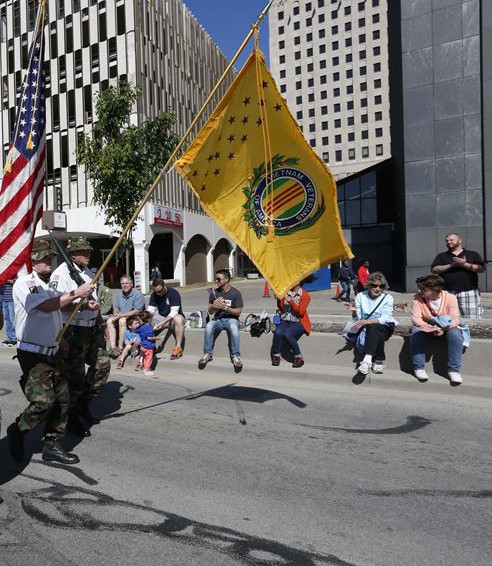Our Goals

VVA’s goals are to promote and support the full range of issues important to Vietnam veterans, to create a new identity for this generation of veterans, and to change public perception of Vietnam veterans. VVA strives to achieve the following:
- Aggressively advocate on issues important to veterans
- Seek full access to quality health care for veterans
- Identify the full range of disabling injuries and illnesses incurred during military service
- Hold government agencies accountable for following laws mandating veterans health care
- Create a positive public perception of Vietnam veterans
- Seek the fullest possible accounting of America’s POWs and MIAs
- Support the next generation of America’s war veterans
- Serve our communities
Founding Principles
“Never again will one generation of veterans abandon another.”
VVA knows what returning veterans face. We have been through it before and we know that, despite all the rhetoric, returning veterans will face major problems. VVA will be here for as long as it takes to make sure that those who serve our country receive the care and respect they have earned.

The VVA Flag
The VVA flag is an elegant presentation of American veterans’ service in the Vietnam War. VVA flags are proudly displayed at all Vietnam Veterans of America meetings and functions and in Veterans Affairs Committee chambers of both the U.S. Senate and the U.S. House of Representatives.
- The background color is golden yellow, the primary color of the flag of the Republic of Vietnam and the ribbon of the Vietnam Service Medal.
- In the “hoist” of the flag, the seventeen brown stars, arranged in three vertical rows, represent the seventeen official campaigns of the Vietnam War.
- The insignia of VVA, including the identification inscription Vietnam Veterans of America is centered between the campaign stars and the “fly” of the flag. The VVA insignia incorporates the design of the flag of the Republic of Vietnam and the ribbon of the Vietnam Service Medal, which was awarded to all men and women who served in Southeast Asia and the contiguous waters or air space there-over from March 15, 1962, through January 28, 1973.
- Surrounding the insignia, in natural colors, is a wreath containing a laurel branch and a sheaf of rice stalks. The two are tied together at the base with a strand of black barbed wire. The rice represents Southeast Asia, and the laurel signifies honor to all who served there. The black barbed wire serves as a reminder of the POWs and MIAs who are still unaccounted for.
17 Campaigns
Advisory — 15 March 1962 – 7 March 1965
Defense — 8 March 1965 – 24 December 1965
Counteroffensive — 25 December 1965 – 30 June 1966
Counteroffensive, Phase II — 1 July 1966 – 31 May 1967
Counteroffensive, Phase III — 1 June 1967 – 29 January 1968
Tet Counteroffensive — 30 January 1968- 1 April 1968
Counteroffensive, Phase IV — 2 April 1968 – 30 June 1968
Counteroffensive, Phase V — 1 July 1968- 1 November 1968
Counteroffensive, Phase VI — 2 November 1968 – 22 February 1969
Tet 69/Counteroffensive — 23 February 1969 – 8 June 1969
Summer-Fall 1969 — 9 June 1969 – 31 October 1969
Winter-Spring 1970 — 1 November 1969 – 30 April 1970
Sanctuary Counteroffensive — 1 May 1970 – 30 June 1970
Counteroffensive, Phase VII — 1 July 1970 – 30 June 1971
Consolidation I — 1 July 1971 – 30 November 1971
Consolidation II — 1 December 1971 – 29 March 1972
Cease-Fire — 30 March 1972 – 28 January 1973
